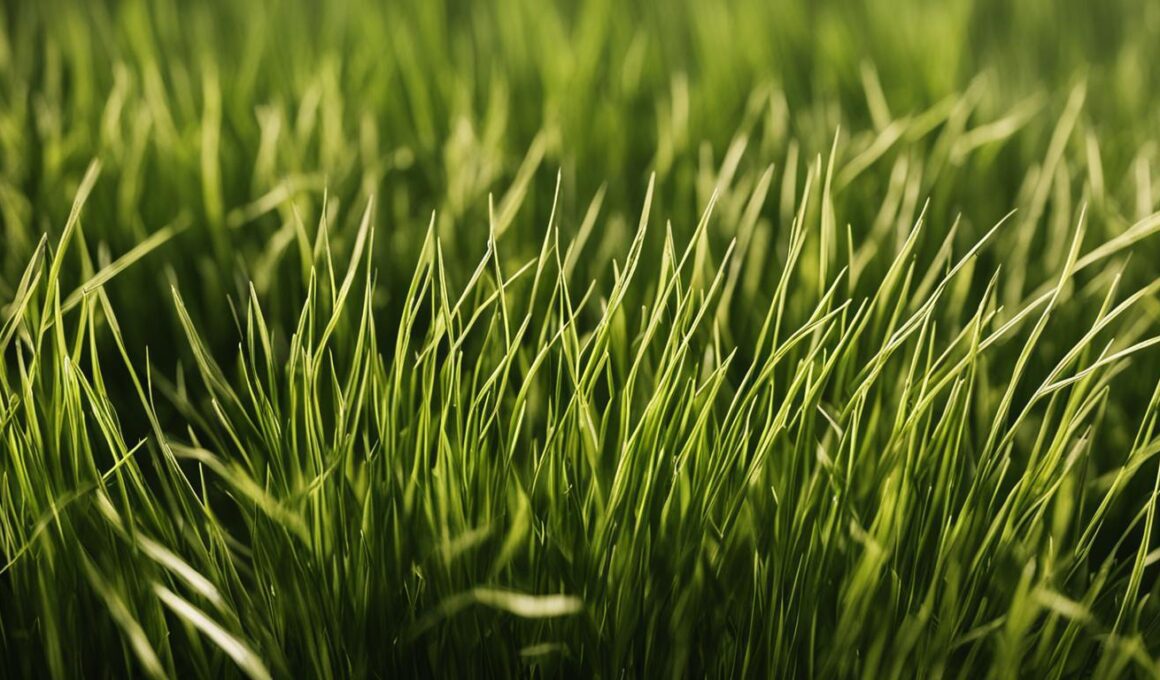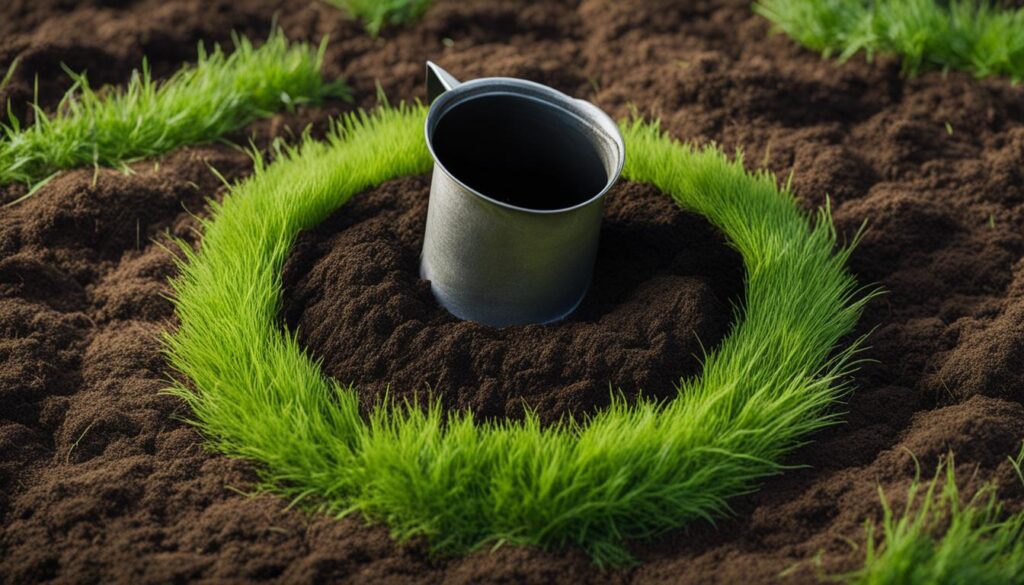Are you looking to create a lush green lawn in a hurry? With the right approach, you can speed up grass seed germination and achieve quick lawn creation. In this guide, we will walk you through five essential steps to help you grow grass fast and enjoy a beautiful yard in no time.
Post Summary
- Choose the right grass seed for your climate – cool season grass for temperature swings, warm season grass for consistent warmth.
- Prepare the soil properly by removing existing grass and weeds, filling in low spots, and ensuring a smooth surface.
- Seed and feed your lawn using a spreader for even distribution of seed and fertilizer, promoting fast growth.
- Water and protect the grass by following a mist-light water-deep water process to keep the soil moist without causing it to become soggy.
- Mow the grass correctly when it reaches three inches in height, preventing weed growth by not removing more than one third of the grass blades.
Choosing the Right Seed
When it comes to growing grass quickly, choosing the right seed is key. The type of grass seed you select should be based on the climate in your area. Cool season grasses are ideal for regions with significant temperature swings throughout the year, such as the Northwest, Midwest, and Northeast. On the other hand, warm season grasses thrive in warm weather with less temperature variation, including the Southwest, Deep South, and Mid-South.
For cool season grasses, consider using Scotts® Turf Builder® Kentucky Bluegrass Mix, which is known for its ability to withstand cold weather and recover quickly from damage. If you live in a warm season climate, opt for Scotts® Turf Builder® Bermuda Grass Seed, a resilient grass that thrives in hot summers and requires less water.
| Cool Season Grasses | Warm Season Grasses |
|---|---|
| Kentucky Bluegrass | Bermuda Grass |
| Tall Fescue | Zoysia Grass |
| Perennial Ryegrass | Centipede Grass |
Choosing the right seed is essential for achieving a lush, green lawn. Consider factors such as climate, sun exposure, and soil conditions when making your selection. Scotts® Turf Builder® offers a wide range of grass seed options to suit different lawn types and conditions. Their high-quality seeds are specifically formulated to promote fast, healthy growth, ensuring you achieve the lawn of your dreams in no time.
Testimonials
“I used Scotts® Turf Builder® Kentucky Bluegrass Mix for my lawn, and I’m amazed at how quickly the grass started to sprout. Within a week, I had a beautiful green carpet covering my yard. Highly recommended!” – Sarah H.
- Choose the right grass seed based on your climate.
- Consider factors such as climate, sun exposure, and soil conditions.
- Opt for high-quality grass seed like Scotts® Turf Builder® for fast, healthy growth.
Preparing the Soil
Before you can achieve successful grass seed germination, it is essential to properly prepare the soil. Taking the time to prepare the soil will create an optimal environment for seed growth and ensure a healthy lawn in the long run.
The first step in preparing the soil is to remove any existing grass, weeds, and large rocks from the area where you plan to plant. This can be done manually by using a sharp shovel or with the help of a sod cutter for larger areas. By eliminating any competition, you give the grass seed the best chance to establish strong roots.
After removing the unwanted vegetation, it’s important to fill in any low spots in the soil. Low spots can lead to uneven growth and water pooling, which can affect the health of your lawn. Use a high-quality topsoil, such as Scotts® Turf Builder® LawnSoil™, to level the ground and create a smooth surface for planting.
Once the low spots have been filled, use a hard rake to break up any clumps of soil and create a fine, even texture. This will ensure that the grass seed is in contact with the soil and can establish strong root systems. Taking the time to properly prepare the soil will pay off in the long run by promoting healthy grass growth and reducing the risk of weed infestation.
| Step | Action |
|---|---|
| 1 | Remove existing grass, weeds, and large rocks |
| 2 | Fill in low spots with topsoil |
| 3 | Break up clumps of soil with a hard rake |
Importance of Soil Preparation
Proper soil preparation is crucial for the success of your grass seed germination. By removing any existing vegetation and creating a level, fine-textured surface, you provide the ideal conditions for the seed to establish strong roots. This not only promotes healthy grass growth but also helps prevent weed infestation and ensures long-term lawn health. Don’t overlook the importance of soil preparation in your quest for a lush, green lawn.
Seed and Feed
One of the most effective ways to speed up grass seed germination is to fertilize the soil immediately after planting. A high-quality fertilizer like Scotts® Turf Builder® Starter® Food for New Grass is recommended as it promotes thick, fast growth. This specially formulated fertilizer is designed to provide essential nutrients for young grass, giving it the boost it needs to establish quickly. It contains a combination of nitrogen, phosphorus, and potassium, which are essential for root development, healthy growth, and disease resistance.
When applying the fertilizer, use a spreader to ensure even distribution of both the seed and the fertilizer. This will help prevent patchy growth and ensure that each area of your lawn receives the necessary nutrients. Scotts® offers a range of spreaders to suit different lawn sizes. For smaller lawns, the Scotts® Whirl™ Hand-Powered Spreader is ideal, covering up to 1,500 square feet. For larger areas, the Scotts® Turf Builder® EdgeGuard® DLX Broadcast Spreader can hold up to 15,000 square feet of product, ensuring efficient and accurate coverage.
“Using a spreader is crucial for achieving even distribution of both seed and fertilizer, which is essential for successful grass seed germination.”
Following the package directions for proper coverage and application is crucial for achieving the best results. It’s important to apply the fertilizer at the recommended rate to avoid over-fertilization, which can damage the grass and negatively impact growth. By using a spreader and following the guidelines, you can ensure that your grass receives the right amount of nutrients to support healthy germination and rapid growth.
Recommended Scotts® Fertilizers for Grass Seed Germination
| Product | Description |
|---|---|
| Scotts® Turf Builder® Starter® Food for New Grass | A high-performance fertilizer designed to promote thick, fast growth and enhance root development. Provides essential nutrients for young grass and protects against disease. Suitable for all grass types. |
| Scotts® Turf Builder® Triple Action Built for Seeding | An all-in-one formula that encourages new grass growth, prevents common weeds, and protects against insects. Ideal for lawns in the North. |
Conclusion
Growing grass quickly and achieving a lush green lawn is a goal many homeowners have. By following the five steps outlined in this guide, you can speed up grass seed germination and enjoy a beautiful lawn in a shorter period of time. Remember to choose the right seed for your climate, prepare the soil properly, seed and feed using a spreader, water and protect the grass as it grows, and mow the lawn correctly.
Choosing the right seed is crucial for successful grass growth. Consider whether you live in a cool season or warm season climate and select the appropriate grass seed accordingly. Preparing the soil is another essential step. Remove any existing grass, fill in low spots, and even out the soil surface using a rake. Seed and feed your lawn using a spreader to ensure even distribution of seed and fertilizer. Watering is crucial for germination and growth, so adopt a mist-light water-deep water process to keep the soil moist without causing it to become soggy. Finally, mow the grass correctly when it reaches three inches in height, being careful not to remove more than one third of the grass blades.
By following these steps, you can create a quick lawn and have the lush, green yard you’ve always desired. With the right seed, proper soil preparation, timely seeding and feeding, adequate watering, and correct mowing techniques, you can speed up grass seed germination and achieve a beautiful lawn in no time. So get started today and enjoy the rewards of a fast-growing, vibrant green lawn!
FAQ
What type of grass seed should I choose?
You should choose the right grass seed for your specific area. Cool season grasses are suitable for regions with significant temperature swings, while warm season grasses thrive in consistently warm weather.
What is the recommended fertilizer for grass seed?
Scotts® Turf Builder® Starter® Food for New Grass is a recommended choice as it promotes thick, fast growth. Scotts® Turf Builder® Triple Action Built for Seeding is also a good option for the North, as it prevents common weeds.
How should I prepare the soil for grass seed?
Start by removing any existing grass, weeds, and large rocks. Fill in low spots with Scotts® Turf Builder® LawnSoil™ and use a tiller to loosen compacted soil. Even out the soil with a hard rake.
How do I ensure even distribution of seed and fertilizer?
Use a spreader to ensure even distribution. For small lawns, the Scotts® Whirl™ Hand-Powered Spreader is ideal, while the Scotts® Turf Builder® EdgeGuard® DLX Broadcast Spreader is suitable for larger spaces.
When should I mow the grass after seeding?
Mow the grass when it reaches three inches in height. Avoid removing more than one third of the grass blades to prevent weed growth.
Are the Methods for Speeding Up Pepper Seed Germination the Same for Grass Seed?
When it comes to speeding up pepper seed germination, the methods may not be the same for grass seed. While both seeds benefit from warm and moist conditions, peppers may require more time and specific temperature range for successful germination. It’s important to research and understand the unique needs of each seed type.











